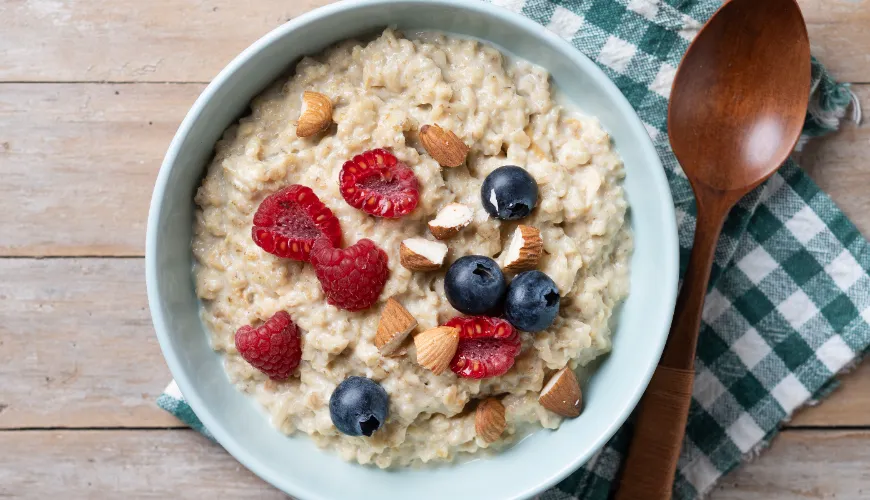
Discover the Essential Tips for Successful Intermittent Fasting for Women

Intermittent Fasting for Women - When It Works, How to Adapt It to Age, and What Experiences Say
Intermittent fasting is a phenomenon that has gained immense interest worldwide in recent years. Its popularity is not only due to promises of quick weight loss but also its positive effects on metabolism, energy levels, and longevity. While men often experience rapid success with this regimen, the situation is more complex for women. So, is intermittent fasting suitable for women too — and if so, what are its benefits and risks at different stages of life?
What is Intermittent Fasting and Why Isn't It Universal
In its basic form, intermittent fasting involves alternating periods of eating with periods of fasting. The most common variations are 16/8 (16 hours of fasting, 8 hours for eating), 14/10, and the 5:2 method (5 days of normal eating and 2 days of significantly reduced calorie intake).
It sounds simple. But the female body is much more sensitive to changes in energy intake and the rhythm of hormonal balance, which can affect not only the results but also the appropriateness of this regimen itself. Fasting or excessively long fasts can cause fatigue, mood swings, insomnia, or even menstrual cycle disorders in women. That's why it's crucial to view intermittent fasting for women differently than for men — and adapt it not only to lifestyle but also to age.
Intermittent Fasting According to a Woman’s Age - What Works and When to Be Cautious
A woman's body changes during her life — and so do the needs in nutrition, hormonal balance, and energy expenditure. The body will react differently at twenty, differently after childbirth, and differently in menopause. So how should intermittent fasting be approached at different stages?
Age 20–30 - Riding the Wave of Life Energy, but Respecting the Cycle
Women in this period usually have a stable metabolism, high estrogen levels, and plenty of energy. If there are no issues with the menstrual cycle or thyroid, intermittent fasting can be very effective. It is recommended to start gently, for example, with a 14/10 regimen. This gives the body enough time to adapt, and there is minimal risk of hormonal imbalance.
Interestingly, some women practice fasting cyclically — for example, in the first half of the menstrual cycle (follicular phase) when the body is naturally more resistant to stress. In the second half (luteal phase), when the need for energy increases and progesterone levels rise, they limit or skip fasting.
Age 30–45 - Between Motherhood and Career
This phase of life is usually energetically demanding. The body recovers after pregnancies, work, children, and the household are managed — and often hormonal fluctuations too. Here, intermittent fasting for women is often seen as a way to regain control over the body, lose weight, and improve focus.
But be careful — chronic stress combined with prolonged fasting can have the opposite effect. Instead of weight loss, there can be a loss of muscle mass and a slowdown of metabolism. In this period, it is recommended to fast for a maximum of 12–14 hours, and not every day. Additionally, it is advisable to combine fasting with a nutritious diet rich in quality proteins, healthy fats, and fiber.
After Age 45 and in Menopause - Hormonal Shift and New Body Needs
Menopause is a period of significant changes — estrogen levels decrease, metabolism slows down, and visceral fat increases. During this period, intermittent fasting can be a welcome helper — improving insulin sensitivity, supporting fat burning, and reducing inflammation.
Again, moderation is key. Shorter fasts (e.g., 12–14 hours) are suitable but regular. Excessive restriction can lead to fatigue, loss of bone mass, or mood deterioration. It's advisable to combine fasting with mild exercise (e.g., yoga, brisk walking) and focus on a diet rich in proteins, calcium, and omega-3 fatty acids.
Try our natural products
Real Reviews from Women - What Do Women Who Tried Intermittent Fasting Say?
There are dozens of stories online from women who have incorporated intermittent fasting into their daily lives — and their experiences vary. Some celebrate weight loss, better sleep, and improved concentration. Others point out issues with menstruation or fatigue.
One frequent review reads:
"I started intermittent fasting 16/8 after the birth of my second child. The first few weeks I felt great — I lost three kilos, had more energy, and my cravings for sweets disappeared. But after two months, I noticed my cycles were longer and I felt irritable. I shortened the fast to 12 hours and added more healthy fats — and everything returned to normal."
Such experiences show that the key to success is listening to your own body and not adopting regimens based on fashion trends. What works for one person may not work for another — especially for women, where many variables come into play.
How to Naturally Integrate Fasting into Everyday Life
One reason for the popularity of intermittent fasting is its flexibility. There is no need to count calories or eat special foods — it's more about rhythm. And this rhythm can suit women who don’t want to think about food all day.
For example, a mother of two who gets up with her children in the morning might naturally skip breakfast and have her first meal around 10 a.m. She can have dinner by 6 p.m. — easily achieving a 14/10 fast. Another woman who works night shifts might choose a regimen according to her biorhythm.
The important thing is that fasting should not be a stressful restriction but a natural part of the day. For some women, intermittent fasting is a path to greater freedom, for others an unnecessary complication. Neither is wrong.
What to Watch Out For and What Can Help
Although the benefits of intermittent fasting for women are well-documented, it is still not suitable for everyone. Women with eating disorders, irregular menstruation, pregnant or breastfeeding women should be especially cautious.
To ensure fasting is safe and enjoyable, it is recommended to:
- Start gradually — initially with a 12-hour fast, e.g., from 7 p.m. to 7 a.m.
- Avoid breaking the fast with binge eating, but with quality, balanced meals
- Maintain hydration, ideally with water, herbal teas, or black coffee without sugar
- Monitor body signals — fatigue, irritability, and changes in the cycle can be warnings
- View fasting as a tool, not a dogma — it can be skipped when the situation requires
Intermittent fasting is not a miraculous solution to all problems, but it can be an effective and gentle tool if used consciously and with respect for individual needs. And this is especially important for women — their bodies are not just smaller versions of male bodies but have their own rules and rhythm. Understanding them means finding a path to balance, not restriction.





